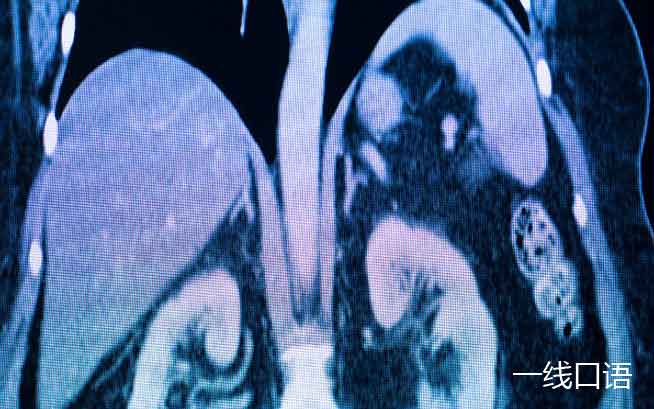双语新闻:科学家发现新器官,可帮助解释癌症扩散!
来源:本站原创发布时间:2018-03-29 18:59:46
据英国《每日邮报》报道,一个研究团队已识别出一个以前未被发现的器官,它可能是人体内最大的数个器官之一。是不是觉得不可思议?一起来看看今天的双语资讯吧!
数千年来,人类一直在研究自身的解剖构造。直到今天,科学家们仍在不断揭示人体的新秘密。据美国全国广播公司3月28日报道,科研人员可能偶然发现了人体内一种前所未知的器官——间质(interstitium)。这一发现有望大大加深人们对包括癌症在内的各项疾病的认识。今天的常用英语口语资讯我们了解一下这项重大的发现!

一、新器官的发现意味着“解剖学的革命”
Ever heard of the interstitium? No? That's OK, you're not alone – scientists hadn't either. Until recently. And, hey, guess what – you've got one! The interstitium is your newest organ. Scientists identified it for the first time because they are better able to observe living tissues at a microscopic scale, according to a recent study published inScientific Reports.
听说过interstitium(间质)吗?没有?没关系,你不是一个人。科学家也是最近才发明的这个词。但你猜怎么着,你也有这玩意儿——根据最近发表的一项研究,它是科学家最新发现的人体器官。如今,科学家能够在微观尺度上更好地观察活体组织,所以首次发现了这个器官。
However, whether the interstitial substance is an independent organ remains to be further studied. One of the authors of the paper, Neil D Taize, professor of pathology at New York University, said that anyway, scholars’understanding of the interstitial means “an anatomical revolution that will affect every organ in the body.”
不过,间质到底是不是一个独立的器官,还有待进一步研究进行解答。但论文作者之一、纽约大学病理学教授Neil D 泰泽表示,无论如何,学者对间质的理解意味着“解剖学的革命,将影响人体的每一个器官。”

二、器官就在眼皮底下
Scientists had long believed that connective tissue surrounding our organs was a thick, compact layer. That's what they saw when they looked at it in the lab, outside the body, at least.
以前,科学家一直认为,包围人体器官的结缔组织是厚实的、紧密的。至少,当他们将结缔组织取出体外、在实验室里仔细观察时,看到的是上述现象。
But in a routine endoscopy (exploration of the gastrointestinal tract), a micro camera revealed something unexpected.
然而,在一次常规胃肠道内镜检查中,医生透过显微摄像头,发现了出乎意料的事情。
When observed in a living body, the connective tissue turned out to be "an open, fluid-filled space supported by a lattice made of thick collagen bundles," pathologist and study author Neil Theise told ResearchGate.
研究作者、病理学家Neil Theise表示:原来,直接观察活体时,结缔组织是“充满液体的开放空间,由厚胶原纤维束构成的格架所支撑”。这个通道网络遍布全身。作为柔软有弹性的缓冲物,它能够保护器官在身体活动时免遭外部冲击。

三、可能为癌症诊疗带来福音
But the interstitium isn't just the "space between cells". Theise and his collaborators think it should be reclassified as a proper organ because of its unique properties and structure which.
不过,interstitium不仅仅是“细胞间的空间”。研究人员认为,它应该被重新归类为一种独特器官,因为它具有独特的性能和结构。
Better understanding of how our bodies work is never a bad thing. But scientists speculate that these useful properties could also work against us, allowing cancerous cells to spread throughout the body. Theise's team found that in patients with some types of malignant cancers, cells could leave the tissues where they originated and leak into these channels, eventually contaminating the lymphatic system.
深入了解人体运行机制从来不是件坏事。科学家推测,这种器官也可以用来对付人类自身,帮助癌细胞扩散至全身。研究人员发现,在某些恶性肿瘤患者体内,细胞可以离开起源组织,渗透到这些通道内,最终感染淋巴系统。一旦进入通道,它们就仿佛坐上了水滑梯。
With further analysis of the fluid traveling across the interstitium, the researchers hope they may be able to detect cancer much earlier than they can today.
如今,我们加强了对肿瘤扩散机制的了解。研究人员希望通过进一步的分析,找到提早探测癌症的方法。
以上就是今天的英语口语学习内容,这一重大发现有望推动医学领域的巨大进步。
浏览:5192
 0
0
下一篇: work out的意思和用法详解
-
SHE新歌《十七》引发回忆杀,八零九零集体泪奔!

想必这几天不少人的朋友圈都被SHE的新歌《十七》刷屏了吧?动人的旋律、朴实的歌词,尤其是走心的MV让不少人泪目,大家纷纷称赞说这是18年最感人的歌曲。
2018-09-18 09:54:36 -
《我是演员》开播后争议不断!看各路大咖如何飙演技

大家还记得去年名噪一时的综艺节目《演员的诞生》吗?如今,它的第二季正式更名为《我就是演员》,以全新的面貌再度重磅归来,引发观众新一轮的期待。
2018-09-20 09:25:23 -
第70届艾美奖完美落幕!你pick的美剧得奖了吗?

有“电视剧界奥斯卡”之称的艾美奖颁奖典礼日前圆满举行,大热剧集《权力的游戏》和《了不起的麦瑟尔夫人》赢得盆满钵满。想知道你喜欢的美剧有没有得奖?一起来看文章吧。
2018-09-21 09:39:50 -
李晨各种黑历史被扒,“好男人”人设真的崩塌了?

自“阴阳合同”事件后,范冰冰彻底淡出公众视线,连微博都100多天没有更新了。虽然范的微博下面冷冷清清,但她的男友李晨最近却频频登上热搜,微博评论下面简直炸开了锅。
2018-09-26 09:05:26 -
吴秀波被曝出轨!小三、婚外情、出轨等英语咋说?

今年中秋节,没想到最好吃的不是月饼,而是来自娱乐圈的“大瓜”。号称“师奶杀手”的演员吴秀波被曝疑似出轨7年,这可让广大观众大跌眼镜!具体是怎么回事呢?
2018-09-28 09:21:37 -
《绯闻女孩》、《还珠格格》翻拍!网友:求放过!

影视圈近几年来翻拍之风盛行,很多曾经受欢迎的影视剧都逃脱不了被翻拍的命运。最近就有消息称《绯闻女孩》、《还珠格格》等作品都将被翻拍。网友纷纷表示:求放过!
2018-09-29 09:28:27 -
范冰冰被开巨额罚单,李晨发声力挺却被骂“马后炮”

范冰冰“阴阳合同”事件在这几天暂时告一段落,结果在意料之外却也是情理之中。范冰冰被罚款近8.8亿,她本人也公开致歉,承认错误。男友李晨发声力挺却被网友骂“马后炮”。
2018-10-09 09:14:38 -
范冰冰的道歉信走进中学课堂,语病太多成改错素材

范冰冰逃税被开巨额罚单的事情前些天是告一段落了,但这些天她依然处在风口浪尖上。先是男友李晨发微博被骂,如今道歉信又被指出语病太多,甚至还被搬上课堂做改错素材。
2018-10-11 09:14:15
-
 盘点外教一对一英语口语培训价格一般多少钱 2020-03-24
盘点外教一对一英语口语培训价格一般多少钱 2020-03-24 -
 盘点北京好的英语外教一对一价格以及相关判断标准 2020-03-24
盘点北京好的英语外教一对一价格以及相关判断标准 2020-03-24 -
 分享10个学英语口语最好的方法 2020-03-24
分享10个学英语口语最好的方法 2020-03-24 -
 10个教你怎样学英语最有效的方法 2019-08-01
10个教你怎样学英语最有效的方法 2019-08-01

